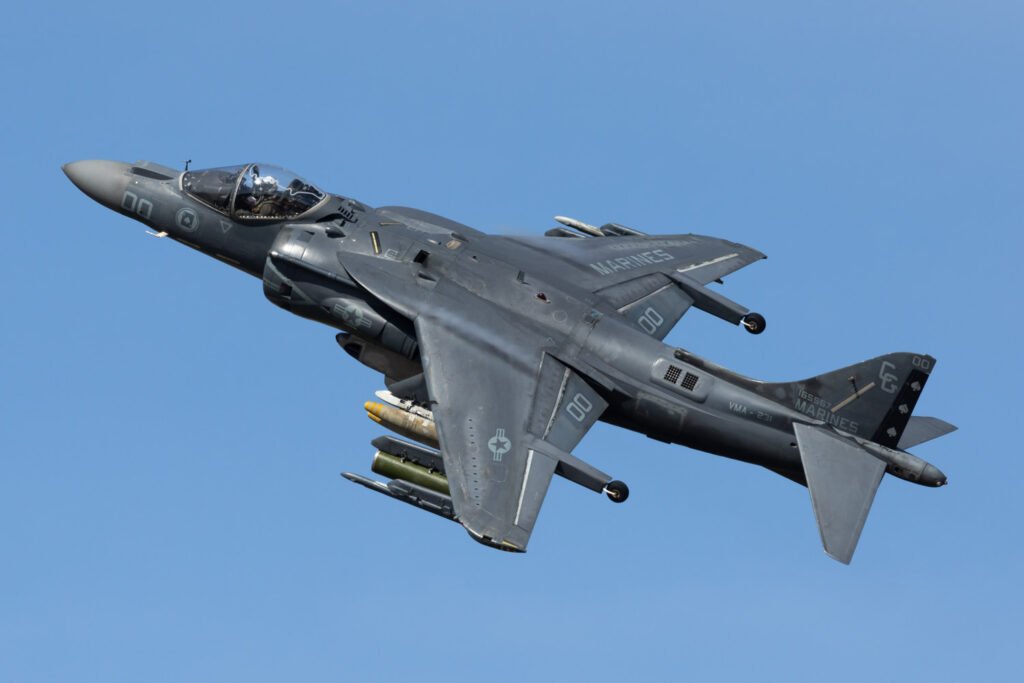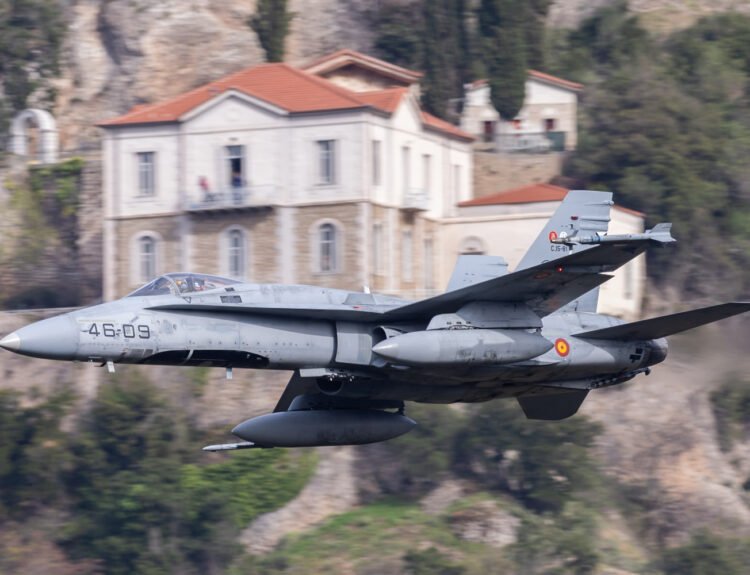The AV-8B has been a part of U.S. Marine Corps air capability, offering an available platform for their particular requirements. Its ability to offer cover for land troops in multiple conditions and environments has made it a trusted instrument for Marines ever since its development.
The infamous jump jet has appeared in many films, documentaries, and television programs, further cementing it in the popular culture. Its unique characteristics and cinematic appearances have made it an object of fascination beyond the military sphere.

As of the early 2020s, the AV-8B Harrier is being retired gradually in favor of newer aircraft. The Marines are gearing up for phasing out the AV-8B Harrier II by late 2026. The F-35B Lightning II, a fifth-generation stealth fighter with V/STOL, is its primary replacement. The F-35 offers improved technology, more sophisticated avionics, and an expanded range of capabilities.
While the AV-8B flies on, particularly that of the U.S. Marine Corps, retirement has been contested. The Air Force and other branches are working towards transitioning to the F-35B, which is to be the cornerstone of U.S. naval aviation assets. The last plan for when the AV-8B retires will depend on factors such as maintenance costs, operations requirements, and F-35 program delivery timelines.
In brief, the AV-8B Harrier has been an effective and handy fighter aircraft in its lifetime. But with the evolving military technology, its time is over, and it will make way for more advanced aircraft that will be capable of meeting future operational needs.

The AV-8B Harrier is a very versatile ground-attack aircraft that has been an essential tool in numerous military operations since its inception. The creation of the British Hawker Siddeley Harrier, the AV-8B was developed by McDonnell Douglas (now Boeing’s subsidiary) and British Aerospace. The aircraft is especially suited for vertical and short takeoff and landing (V/STOL) operations, which makes it capable of being used from smaller ships, forward operating bases, and spaces that are constrained.
While the USMC phases out AV-8B Harrier II operations, the Spanish Navy (Armada Española) is still operating the harriers on its assault ships, while the Italian Navy (Marina Militare) is operating theirs on its aircraft carriers. However, the Italian Navy is planning to have the Harriers retire from service before the USMC by 2025, while the Spanish Navy aims to operate the Harriers until 2030.
It should be remembered that whereas military inventories and capabilities change, so also does the operational status of such aircraft. For current information on who flies the AV-8B Harrier II, defense publification or government announcements are recommended.







